
views
Spray-Painting Your Bookshelves

Move your bookcase into the garage or lay down plastic tarps. If possible, move your bookcase into the garage so that you don't get spray paint on anything in the room. If your bookcase is built-in, or too heavy to move, then protect your room by taping plastic tarps over any floor, walls, or furniture close to the painting.
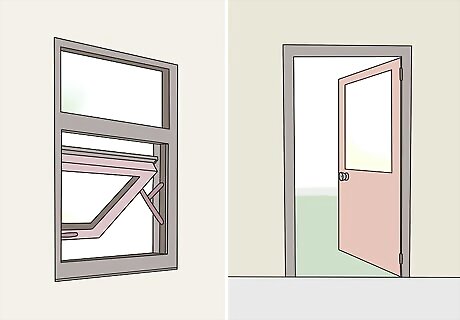
Open windows and doors to increase ventilation in your painting space. Spray-painting creates fumes that aren't good to breathe in. Consider placing a fan facing out the window to blow out air and keep it circulating in the room.

Wipe down your bookcase with a tack cloth. A tack cloth is a lint-free cloth that is slightly tacky (sticky), which means it can pick up dust much better than your average cleaning rag. Getting your furniture clean before you paint it is important so that you don't accidentally make specks of dirt stick to the furniture. A dry cloth will get off most of the dust, but if you have more stubborn grit, just wet the cloth until it is slightly damp and rub it over the furniture.
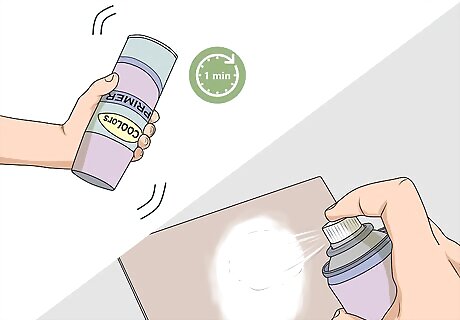
Shake a can of primer for 1 minute and practice spraying it on plywood. Hold the canister upside down and shake it vigorously. This will aerosolize the primer and make sure it is ready to spray. Practice spraying it on some plywood, by holding the primer about a foot (30cm) away, and moving closer and farther until you find a position that works best.
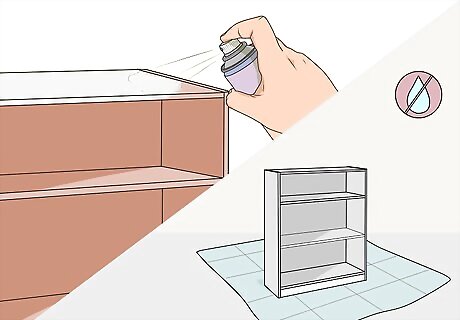
Spray the primer over the bookcase and let it dry for 20 minutes. Move the can left to right and up and down as you spray. Apply the primer in a thin, even coat. Check the instructions on your particular primer to see if it requires one or two coats. If it needs two coats, wait 20 minutes before applying the second coat.
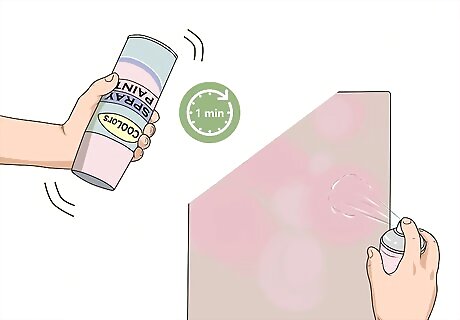
Shake the spray paint for 1 minute and test it on plywood. Just as you did for the primer canister, shake the spray paint canister vigorously for 1 minute and then practice spraying it on a piece of cardboard. Hold the canister closer to the wood for a darker paint color and farther away for a lighter color.
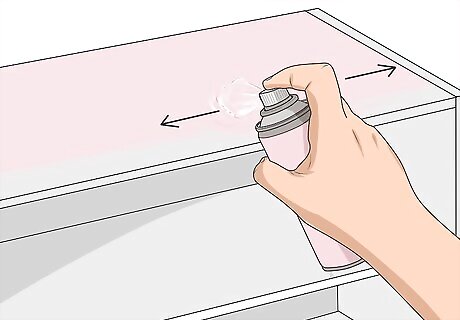
Apply the first coat of spray paint in a thin, even coat. Spray the spray paint in overlapping strokes, moving the can up and down and side to side. Cover the bookcase completely in one coat of paint and let it dry. Spray beyond the edges of the bookcase to avoid drips at the edge. Pause to shake the can every few minutes during painting. Keep your spray can in constant motion to avoid drops.
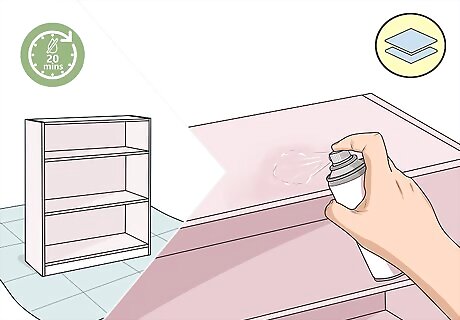
Let the bookcase dry for 20 minutes and apply the second coat. Spray the second coat thinly and evenly, shaking the can every few minutes. Let the second coat dry and see if the bookcase is the color you want. If not, keep on applying thin coats of spray paint, until your bookcase is the perfect color.
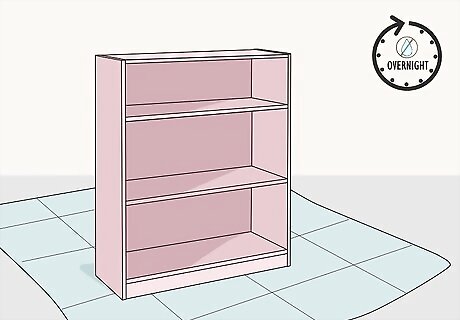
Let the bookcase dry overnight. Although spray paint dries pretty fast, it's best to make absolutely sure that your bookcase is dry before you touch it, move it, or load it up with books and knickknacks. Once your bookcase is dry, you can take away your drop cloth, and move your bookcase to wherever you want it.
Using a Paintbrush and Acrylic Paint
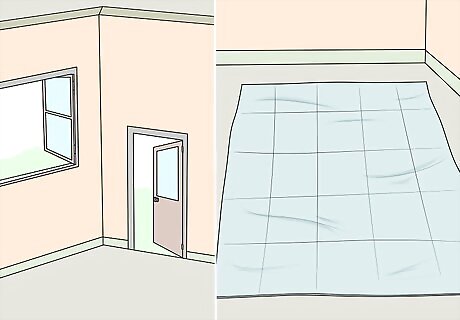
Ventilate your room and lay down a drop cloth. Liquid paint doesn't emit as many fumes as spray-paint, but it's still important to ventilate your room by opening up windows and doors. Also lay down a drop cloth to protect your floor from paint drips.
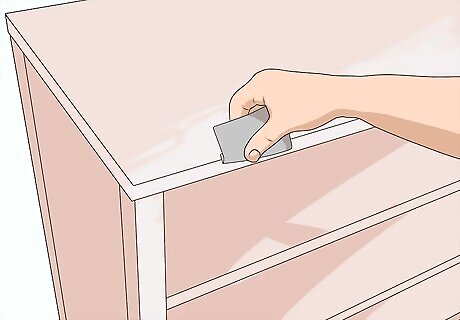
Sand your bookcase with 150-grit sandpaper. You can sand by hand if you like, but that takes a while. It's quicker to sand with a palm sander, a little machine you can attach sandpaper to. If your bookcase has a woodgrain, sand in the direction of the grain. Only sand enough to take away any shine that's on the surface. Don't gouge into the wood itself. You don't have to sand away all the old paint! Wear gloves and safety goggles to protect yourself from dust while you're sanding. Wipe off the sanding dust with a tack cloth before continuing.

Apply a coat of primer to your bookshelves and let it dry. The base coat of the primer will help your paint stick to the bookcase. Choose a primer designed for use on the material your furniture is made from. You can use a spray-on primer, even if you want to paint the bookcase with a paintbrush. Or, you can use a paint-on primer. Follow the instructions on the primer bucket for drying times. Some primers will dry in as few as 10-20 minutes, while others might need a few hours.
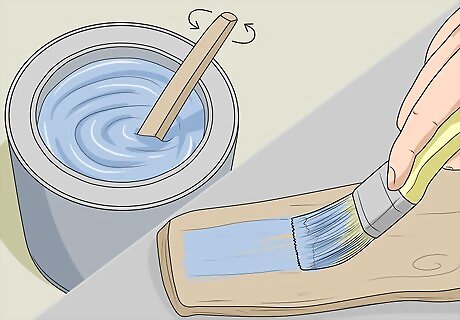
Stir your acrylic paint with a stir stick and test on some scrap wood. Acrylic is a great paint to use for a bookshelf. Latex paints, which are commonly used for walls, can sometimes remain tacky, which isn't good for putting books on. Stir your paint to make sure it's all a consistent color and test it on some scrap wood. Practicing on scrap wood will help you figure out how much paint to load on the brush, and how long to make your brushstrokes, before you start on the actual bookcase.
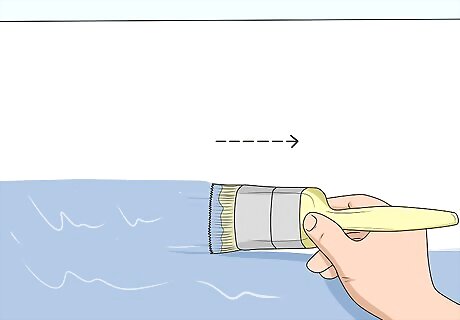
Paint the bookshelf in a light, even coat in the direction of the grain. Dip the paintbrush in the bucket of paint and rub off any excess paint on the scrap wood so that your brush isn't dripping. Then paint lightly in the direction of the wood grain. Use long, even strokes. Start at the bottom of the bookcase and work upwards.
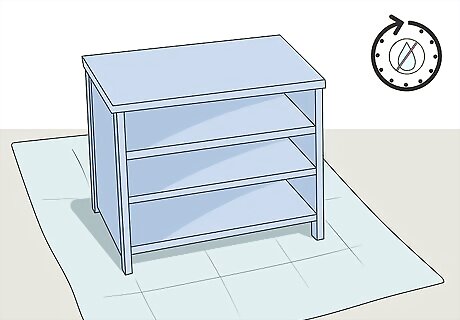
Let the bookshelf dry completely after the first coat of paint. The amount of time your paint will take to dry depends on the type of paint you choose. Most paints need about 6-8 hours to dry. Chalk paint, which sticks very well to unsanded wood, only takes about 30 minutes to dry. Check your can of paint to see how long the recommended drying time is.
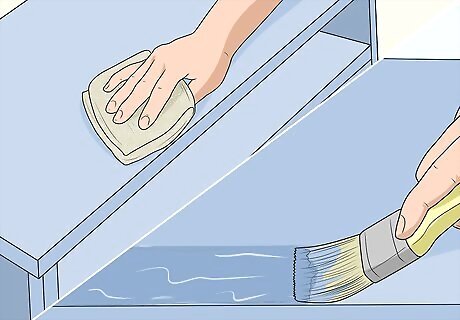
Wipe the bookshelf with a tack cloth before painting a second coat. This will collect any dust that may have settled on the furniture after your first coat. Make sure to wipe down the furniture between each coat of paint. Paint more coats of paint, until you get the look you want. Remember to let the paint dry in between each coat and wipe with a tack cloth once dry.
Playing with Color and Design
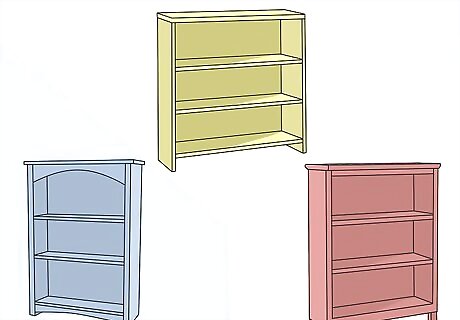
Paint your bookshelf a single color for a simple solution. This is easy to do and easy on the eyes. If you want your room to look brighter, paint your bookcase white or yellow. If you want a calm, beachy vibe, paint your bookcase pale blue. For dramatic contrast in a bright room, paint your bookcase in a striking red or black.
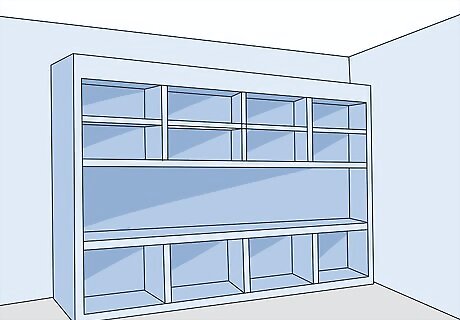
Paint your large, built-in bookcase the same color as your walls. If you have a large, built-in bookcase that you want to blend in seamlessly with the room, don't paint it the color of the trim or the woodwork. Instead, paint it the same color as your walls. This will make the bookshelf not stand out as much, which is easy on the eyes for such a large piece of furniture. If you have free-standing bookcases and you want them to look built-in, paint them the same color as the walls.

Paint the backing a different color from the rest of the bookcase. Make your bookcase pop by painting the backing a different color from the rest of the bookcase. You can choose two colors that are similar, for a harmonious, two-toned look, or choose contrasting colors for a dramatic pop.

Tape different patterns of wallpaper to each backing panel. If you want a more elaborate design and texture on the backing of your bookcase, cut out rectangles of your favorite wallpapers and tape them to the backing. You can make each backing panel have the same wallpaper, or choose wallpapers that are all the same color but different patterns for an eye-catching look. You'll need to remove the shelves to paint the back, or, if they're not removable, apply painter's tape to the shelves so you don't accidentally paint them with the backing color.

Use a stencil to embellish your bookcase with designs. If you want to decorate your bookshelves even more you can use a stencil to paint on designs. Or, try painting freehand for a playful, whimsical look.










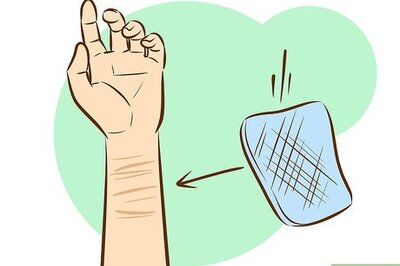
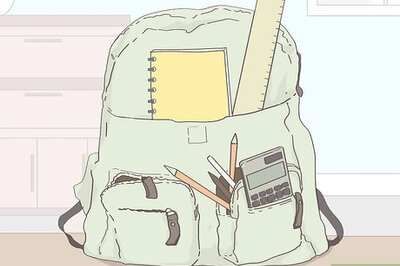






Comments
0 comment